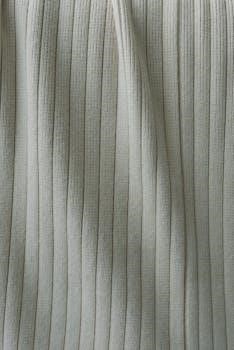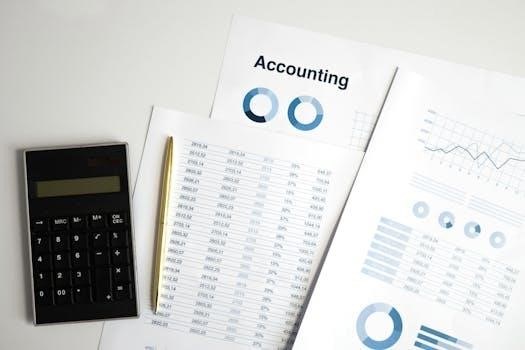UNF Thread Chart PDF⁚ A Comprehensive Guide
Navigating the world of fasteners requires understanding thread types․ This guide dives into UNF (Unified National Fine) threads, offering a comprehensive thread chart PDF for easy reference․ Learn about dimensions, applications, and designations, all in one place․
The Unified National Fine (UNF) thread is a crucial standard in fastener technology, known for its finer pitch compared to UNC (Unified National Coarse) threads․ This finer pitch means more threads per inch, offering enhanced tightening torque and greater resistance to loosening under vibration․ UNF threads are widely used in applications demanding precision and secure fastening, such as aerospace, automotive, and precision instruments․
Understanding UNF threads is essential for engineers, machinists, and anyone working with threaded fasteners․ This standard ensures interchangeability and compatibility across various manufacturers and applications․ The designation of a UNF thread includes the nominal diameter and the number of threads per inch, providing a clear specification for selection and use․
Compared to coarse threads, UNF threads offer a greater tensile stress area due to their smaller pitch diameter․ This increased area translates to a stronger joint that can withstand higher loads and vibrations․ The use of UNF threads is particularly beneficial when working with thinner materials where coarser threads might strip easily․ This makes them ideal for applications where material thickness is limited․
Understanding the Unified Thread Standard (UTS)
The Unified Thread Standard (UTS), defined by ASME B1․1, establishes a consistent framework for screw threads in inch dimensions․ As the North American counterpart to the ISO metric thread system, UTS ensures interchangeability and compatibility of threaded fasteners across various manufacturers․ This standard encompasses various thread series, including Unified National Coarse (UNC), Unified National Fine (UNF), and Unified National Extra Fine (UNEF), each tailored to specific application needs․
UTS specifies the thread form, dimensions, tolerances, and designations for these threads․ The 60-degree thread angle is a key feature, providing a balance between strength and ease of manufacturing․ Understanding UTS is crucial for engineers and designers to select appropriate threads for their applications, ensuring reliable and secure fastening․ The standard also defines fit classes, indicating the tightness of fit between mating threads, which is essential for achieving desired performance․
Compliance with the Unified Thread Standard guarantees that fasteners meet specific quality and performance requirements․ This standardization promotes efficiency in manufacturing, assembly, and maintenance processes․ By adhering to UTS guidelines, industries can minimize the risk of thread failure and ensure the integrity of their products․ The UTS serves as a cornerstone for threaded fastener design and application across North America․
UNC vs․ UNF⁚ Key Differences
Understanding the distinction between UNC (Unified National Coarse) and UNF (Unified National Fine) threads is crucial for selecting the right fastener․ The primary difference lies in the thread pitch, or the number of threads per inch (TPI)․ UNC threads feature a coarser pitch, meaning fewer threads per inch, while UNF threads have a finer pitch, resulting in more threads per inch for a given diameter․
UNC threads are generally preferred for applications where quick assembly and disassembly are important, and where the material being fastened is relatively soft․ The coarser pitch offers greater resistance to stripping and is less susceptible to cross-threading․ Conversely, UNF threads are better suited for applications requiring higher tensile strength and greater precision․ The finer pitch provides a larger contact area between the threads, resulting in increased holding power and improved resistance to loosening under vibration․
Another key difference is the tap drill size required for each thread type․ UNF threads typically require a smaller tap drill size than UNC threads of the same diameter․ This is because the finer pitch of UNF threads necessitates a smaller hole to accommodate the threads․ Choosing between UNC and UNF depends on the specific application requirements, considering factors such as material hardness, desired holding power, and ease of assembly․

UNF Thread Dimensions⁚ Major, Minor, and Pitch Diameters
Understanding the dimensions of UNF threads is crucial for accurate design and manufacturing․ Key dimensions include the major diameter, minor diameter, and pitch diameter․ The major diameter is the largest diameter of the thread, measured from crest to crest․ The minor diameter is the smallest diameter of the thread, measured from root to root․ These diameters play a vital role in determining the strength and fit of the threaded connection․
The pitch diameter is the diameter at which the thread width and groove width are equal․ It’s a theoretical diameter located midway between the major and minor diameters and is critical for proper thread engagement and load distribution․ Accurate measurement of these diameters ensures compatibility and proper function of threaded components․ Manufacturers often consult UNF thread charts to determine the precise dimensions for each thread size․
Tolerance is also a key consideration․ Threads are manufactured to specified tolerances, allowing for slight variations in dimensions․ These tolerances ensure interchangeability and proper fit between mating parts․ The UNF standard defines specific tolerance classes that dictate the allowable variation in thread dimensions․ Careful attention to these dimensions and tolerances is essential for achieving reliable and consistent threaded connections in any application․
UNF Thread Dimensions⁚ Threads Per Inch (TPI)
Threads Per Inch, commonly abbreviated as TPI, is a crucial specification for UNF threads․ It defines the number of thread crests present within a one-inch length along the screw or bolt․ TPI directly impacts the thread’s pitch, where pitch refers to the distance between adjacent thread crests․ A higher TPI signifies a finer thread, meaning more threads are packed into that one-inch length, resulting in a smaller pitch․
UNF threads are characterized by their finer pitch compared to UNC (Unified National Coarse) threads․ This finer pitch offers several advantages, including increased tensile strength due to the larger minor diameter, greater resistance to loosening under vibration, and enhanced adjustability in precision applications․ However, finer threads are also more susceptible to cross-threading and require more careful handling during assembly․

Consulting a UNF thread chart is essential for determining the correct TPI for a given thread size․ The chart provides a quick reference for matching the thread diameter with its corresponding TPI value, ensuring proper selection and compatibility of fasteners․ Understanding TPI is paramount for engineers, machinists, and anyone working with threaded components, as it directly influences the performance and reliability of the assembled joint․
UNF Thread Chart for Quick Reference
A UNF (Unified National Fine) thread chart serves as an indispensable tool for engineers, machinists, and anyone working with threaded fasteners․ Its primary purpose is to provide a readily accessible reference for identifying the key dimensions and specifications of various UNF thread sizes․ These charts typically present data in a tabular format, organizing information such as thread size, threads per inch (TPI), major diameter, minor diameter, and pitch diameter․
The chart allows for quick determination of thread parameters without the need for manual calculations or complex formulas․ This is especially valuable in situations where time is critical or when dealing with a variety of thread sizes․ By simply locating the desired thread size on the chart, users can instantly obtain the corresponding TPI and diameter values, ensuring accurate selection and application of fasteners․
Furthermore, a comprehensive UNF thread chart may include additional information such as tap drill sizes, which are essential for creating internal threads․ Having this information readily available streamlines the tapping process and reduces the risk of errors․ Ultimately, a UNF thread chart is a vital resource for anyone involved in design, manufacturing, or maintenance activities that involve UNF threaded components․ Its ease of use and comprehensive data make it an invaluable asset in ensuring proper fastener selection and assembly․
External Thread Dimensions for UNF Screw Threads
Understanding the external thread dimensions of UNF (Unified National Fine) screw threads is crucial for ensuring proper fit and functionality in various applications․ These dimensions dictate the physical characteristics of the male threaded component, influencing its compatibility with corresponding female threads․ Key external thread dimensions include the major diameter, pitch diameter, and minor diameter․
The major diameter represents the largest diameter of the thread, measured from crest to crest․ The pitch diameter is the diameter at which the thread width and groove width are equal․ The minor diameter is the smallest diameter of the thread, measured from root to root․ These diameters, along with the threads per inch (TPI), define the thread’s overall size and geometry․
Accurate knowledge of these dimensions is essential for selecting the correct tap drill size for creating mating internal threads and for verifying the quality of manufactured threads․ Deviations from specified dimensions can lead to issues such as loose fits, thread stripping, or complete incompatibility between threaded components․ Therefore, engineers and machinists rely on detailed UNF thread charts to ensure adherence to established standards and achieve optimal performance in threaded assemblies․ Proper measurement techniques and calibrated tools are also necessary for accurately determining external thread dimensions․
Tap Drill Sizes for UNF Threads
Selecting the correct tap drill size is paramount when creating internal threads to mate with UNF (Unified National Fine) screws․ The tap drill prepares the hole to the appropriate diameter, ensuring that the tapping process forms clean, strong threads without overstressing the tap or the workpiece material; An undersized tap drill can lead to difficult tapping, potential tap breakage, and weak threads, while an oversized tap drill results in shallow, easily stripped threads․
UNF thread charts provide recommended tap drill sizes for each UNF thread size․ These charts typically list the drill size in both fractional inches and millimeters, offering flexibility for machinists using different measurement systems․ The tap drill size is closely related to the minor diameter of the UNF thread, which is the diameter of the hole at the thread roots․
When selecting a tap drill, it’s crucial to consider the material being tapped․ Softer materials like aluminum may require slightly larger tap drill sizes to prevent thread binding, while harder materials like steel may benefit from slightly smaller tap drill sizes to ensure adequate thread engagement․ It is also important to use sharp, high-quality taps and appropriate cutting fluids to facilitate smooth thread formation and extend tap life․ Precise drilling and careful tapping techniques are essential for achieving accurate and reliable threaded connections․

Applications of UNF Threads
UNF (Unified National Fine) threads find extensive application across various industries and engineering disciplines, prized for their superior holding power and precision compared to coarser thread forms․ Their finer pitch translates to a greater number of threads per inch, which increases the frictional resistance and enhances the fastener’s ability to resist loosening under vibration or dynamic loads․ This makes UNF threads a preferred choice in applications where reliability and stability are critical․
In the aerospace industry, UNF threads are commonly employed in aircraft engines, control systems, and structural components, where they must withstand extreme conditions and maintain tight tolerances․ The automotive sector utilizes UNF threads in engine assemblies, braking systems, and suspension components, ensuring secure and dependable connections․ Precision instruments, such as optical devices and measuring equipment, rely on UNF threads for accurate alignment and stable positioning of critical parts․
Furthermore, UNF threads are frequently used in electronics manufacturing, where miniature fasteners are required to assemble circuit boards, connectors, and other delicate components․ The tighter thread engagement of UNF threads allows for higher clamping forces with smaller fasteners, crucial in compact electronic devices․ Their versatility and reliability have solidified UNF threads as a staple in numerous engineering applications, offering a balance of strength, precision, and vibration resistance․ The fine pitch allows for finer adjustments․
UNF Thread Designation and Interpretation
Understanding UNF (Unified National Fine) thread designations is crucial for proper selection and application of fasteners․ A typical UNF thread designation follows a specific format, providing essential information about the thread’s characteristics․ The designation begins with a nominal size, indicating the thread’s major diameter in inches․ This is followed by a hyphen and the number of threads per inch (TPI), specifying the thread’s pitch․ For example, a designation of “1/4-28 UNF” indicates a thread with a 1/4-inch major diameter and 28 threads per inch․
Additionally, the designation may include a thread class, which defines the tolerance and fit of the thread․ Common thread classes for UNF threads include 2A and 3A for external threads (screws and bolts) and 2B and 3B for internal threads (nuts and tapped holes)․ Class 2A/2B threads are the most common, offering a balance of performance and ease of assembly․ Class 3A/3B threads provide tighter tolerances for applications requiring higher precision․
Interpreting the UNF thread designation accurately ensures compatibility and proper function of threaded connections․ Incorrect thread selection can lead to assembly issues, reduced strength, or premature failure․ Consulting a UNF thread chart PDF can greatly assist in deciphering these designations and identifying the corresponding dimensions and specifications․ Remember to consider the material properties of the fastener․ Also the coating and intended use․
Availability of UNF Thread Chart PDFs
Accessing a reliable UNF (Unified National Fine) thread chart PDF is essential for engineers, machinists, and anyone working with threaded fasteners․ Fortunately, numerous resources offer these charts for free download․ Many reputable websites specializing in manufacturing, engineering, and hardware provide comprehensive UNF thread charts in PDF format․ These charts typically include critical dimensions such as major diameter, minor diameter, pitch diameter, and threads per inch for various UNF thread sizes․

Furthermore, several online databases and engineering tools offer interactive UNF thread calculators and charts․ These resources often allow users to input specific thread parameters and instantly retrieve the corresponding dimensions and specifications․ When searching for a UNF thread chart PDF, it’s crucial to ensure the source is credible and the information is accurate․ Look for charts that adhere to recognized industry standards such as ASME B1․1․
In addition to online resources, many hardware suppliers and fastener manufacturers provide printed or digital UNF thread charts in their catalogs or product brochures․ These charts can be a valuable reference tool for quick lookups in the workshop or on the job site․ Always verify the chart’s accuracy and applicability to your specific needs before relying on its information․ A readily available and accurate UNF thread chart PDF is an indispensable asset for anyone working with UNF threaded fasteners, ensuring proper selection, assembly, and performance․
